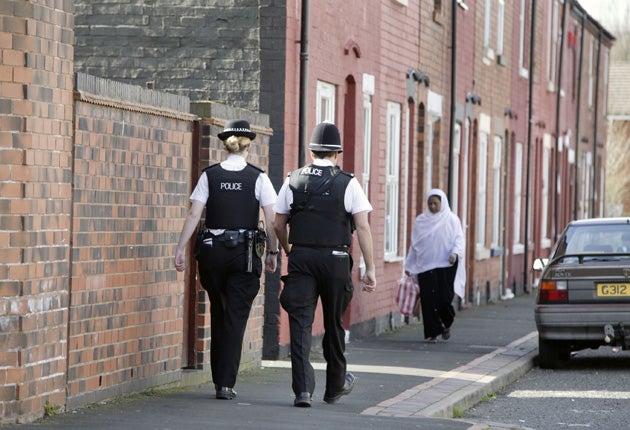Met to keep eye in sky for all bobbies on beat
Personal GPS system will keep track of officers who are patrolling on their own

You can never find a policeman when you need one, or so goes the old adage. But now the Metropolitan Police will have no such problems, because they are spending £2.2m on personal GPS systems so they can track all their beat bobbies.
At present, officers can be found only if they are in a patrol car and not if they are on foot. But now the force plans to introduce Automatic Person Location Systems (APLS) technology. It will begin as a two-month trial at the end of this month in Kensington and Chelsea borough, then will be rolled out across other regions of London.
Sir Paul Stephenson, the Commissioner at Scotland Yard, has announced that he wants officers patrolling London alone and not, as had become the norm, in pairs.
Privately, officers have resisted, saying that this would be unsafe. To counter, management at the Met introduced the APLS radios, promising that officers wearing them will be able to be found by their supervisors at any given time. A spokesman for the Metropolitan Police said that the new technology would not replace the existing Airwave radio system, but would be incorporated into the handsets.
He added: "When an officer presses their emergency button the MPS is able to identify the individual officer but not their specific location. This then takes time to analyse where they have been deployed and where they may be.
"Although they may be located by their police vehicle, if they are assigned to one, they still may not be near their vehicle when they require urgent assistance. APLS will mean that an officer in need of urgent assistance will be able to be located and assisted much more easily."
The system works by sending an automatic satellite signal to the officer's radio at designated intervals. Using this information, the officer's position is plotted on a map. As his or her position changes the map creates a "slug trail" showing not only where the officer is, but where he or she has been.
But cynics have suggested that the system could be used to check on officers, making sure they are where they should be and, crucially, given Sir Paul's insistence in single patrols, that they are not working in pairs.
The spokesman added: "Officers' positions will be able to be located only when they are on duty and wearing their police radio. While they are on duty as a Metropolitan Police officer it is entirely justified that the MPS can locate their position for operational purposes, and the public should be able to expect this."
Pete Smyth, of the Metropolitan Police Federation, said: "It is a bit Big Brother, but we are not really for or against it either way. Our only concern is that there needs to be proper consultation on this. There should be a trial and then a review, looking at how that trial went. As far as I am aware, this will not happen. The Met seem desperate to roll this out as quick as they can without actually reviewing how well it works."